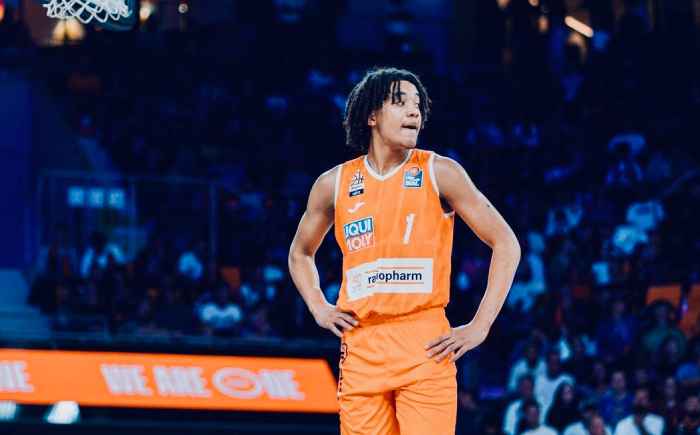
Knicks Make Major Moves for 5 Picks After Mikal Bridges Trade
The New York Knicks have been active even after their blockbuster trade with the Brooklyn Nets for Mikal Bridges. As they approached the 2024 NBA Draft, the Knicks held the 25th and 26th picks.
With the 25th pick, New York selected French guard Pacome Dadiet. However, they traded the 26th pick to the Oklahoma City Thunder. According to The Athletic’s Shams Charania, the Knicks received a substantial return of five future second-round picks from the Thunder in exchange for the 26th pick.
The Thunder used the 26th pick to select Weber State guard Dillon Jones. Although the Knicks announced the trade, they did not disclose the details of these future draft picks. “Sources: OKC is sending five second-round picks to the Knicks for Dillon Jones at No. 26,” Charania reported on June 26, 2024, on X.

In a separate transaction, New York acquired the 51st pick in the second round of the 2024 NBA Draft from the Washington Wizards, as reported by ESPN’s Adrian Wojnarowski. The Knicks traded for a total of six draft picks on the draft’s opening night but netted five additional selections after trading the 26th pick to the Thunder.
Cap Savings and Strategic Gains
Trading the 26th pick to the Thunder also saved the Knicks approximately $3 million in salary cap space for the 2024-25 season. Second-round picks are often undervalued due to their low hit rate, but late first-round picks also rarely yield star players. This trade with Oklahoma City accomplished two goals for New York: it replenished their future picks after trading five first-round selections in the Bridges deal and provided significant cap savings.
“By trading out of No. 26 and stashing Pacome Dadiet – and replacing those picks by rostering two 2nd round picks on rookie minimum – Knicks could save a total of roughly $3 million in team salary for 2024-25, per @YossiGozlan,” noted SNYTV.com’s Ian Begley on June 26 on X. “It’s not yet clear if Dadiet will be stashed.”
The Knicks’ strategic maneuvers position them well for the future, balancing immediate roster needs with long-term flexibility and asset accumulation.
Leave a Reply